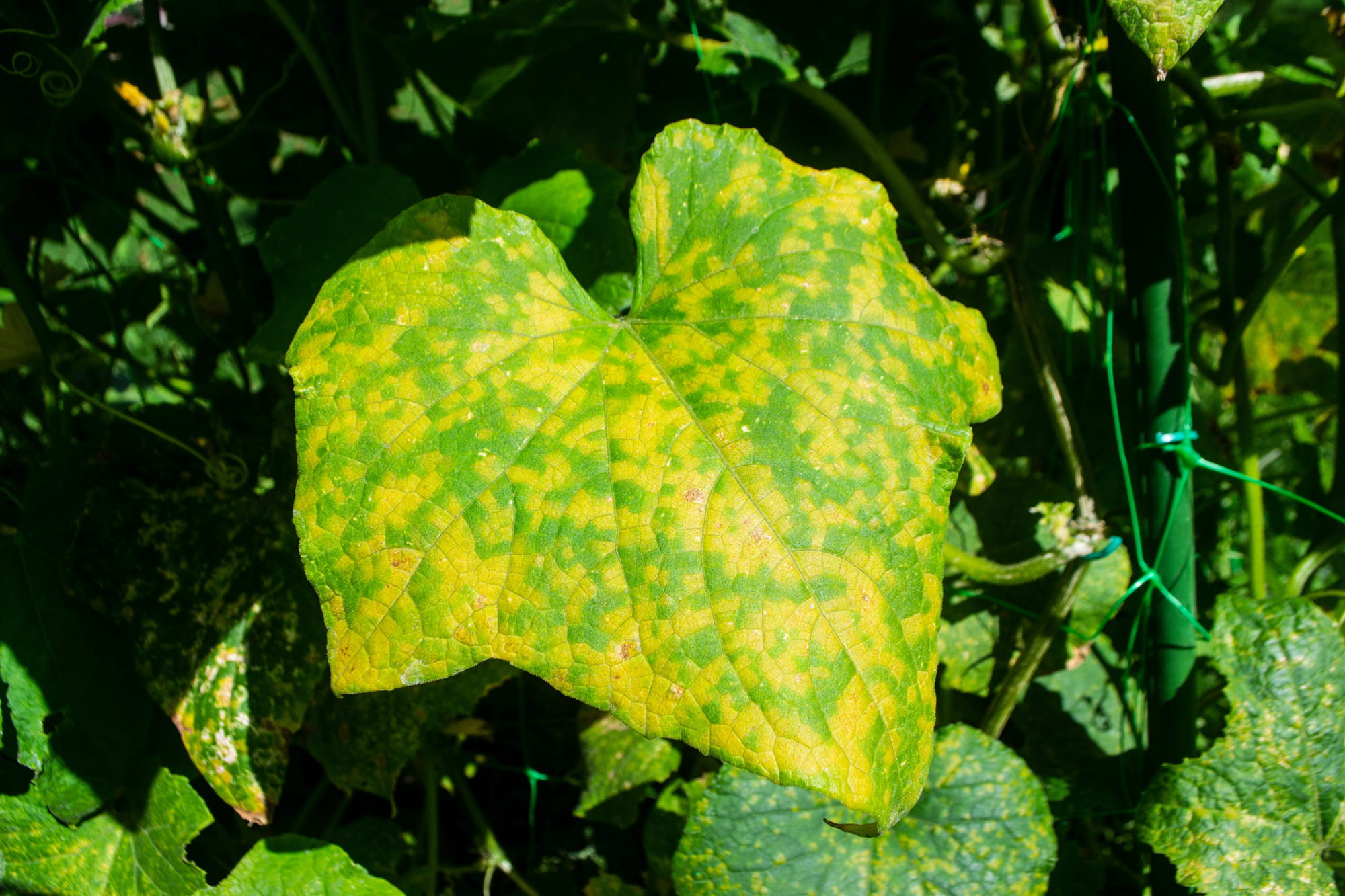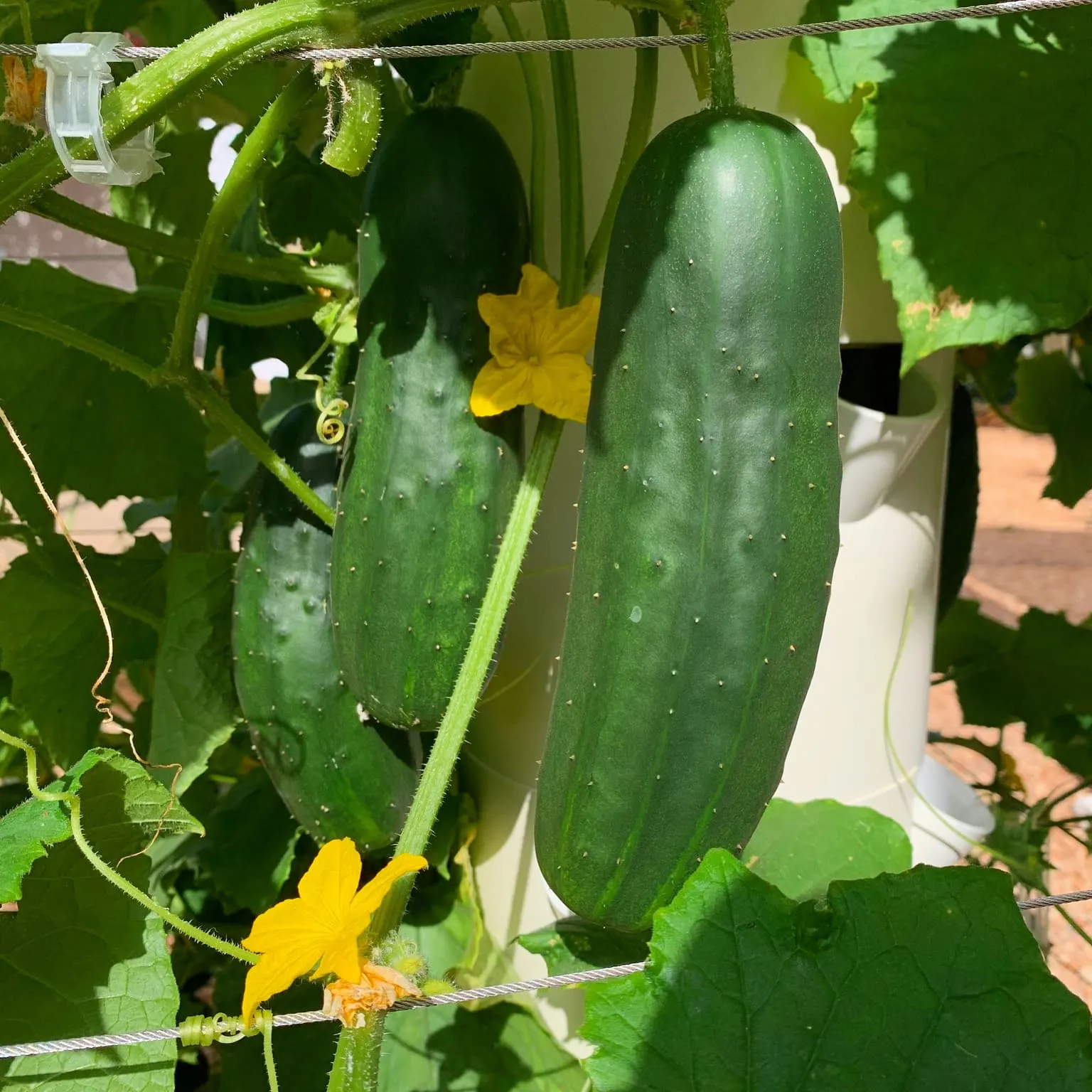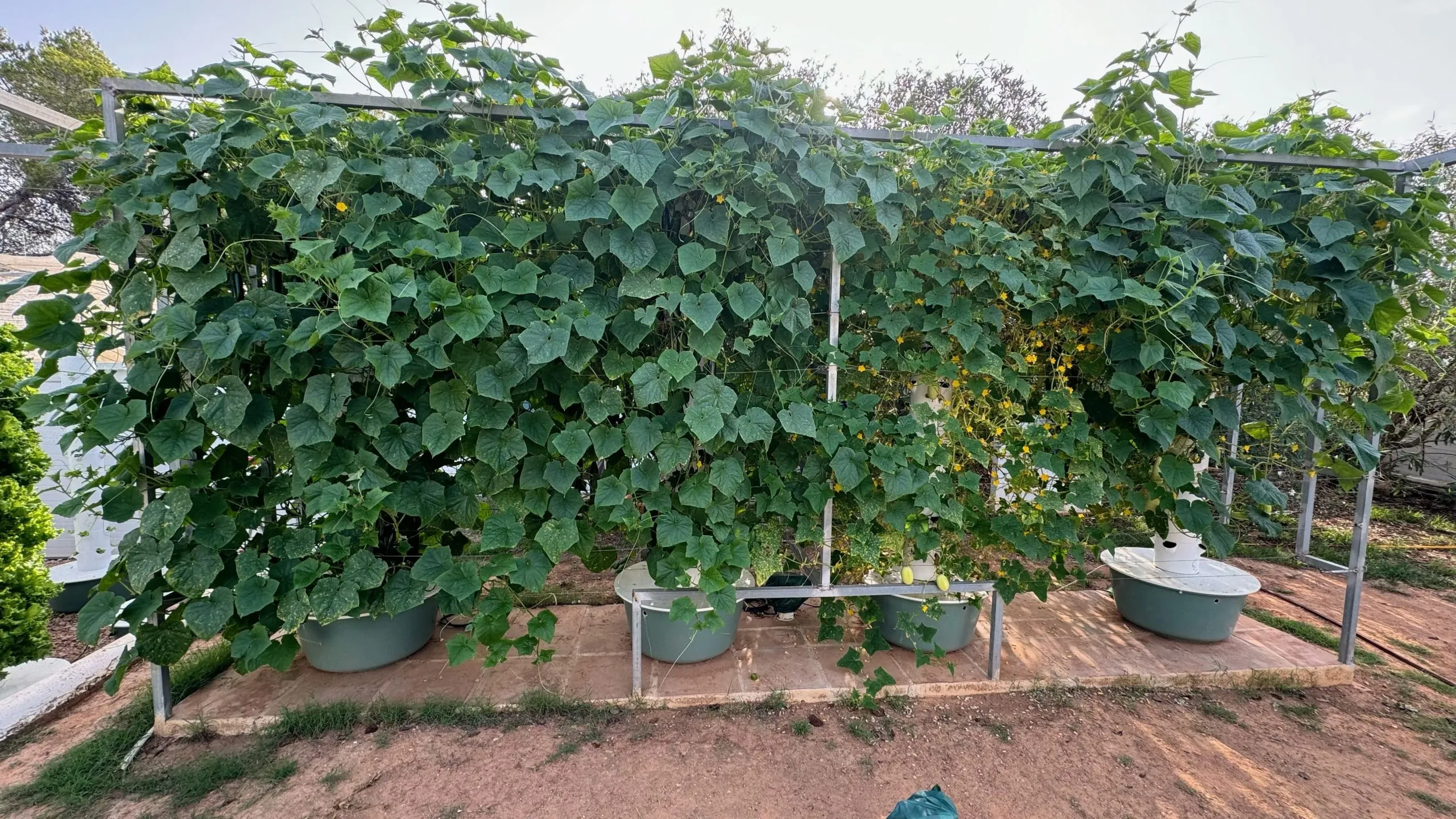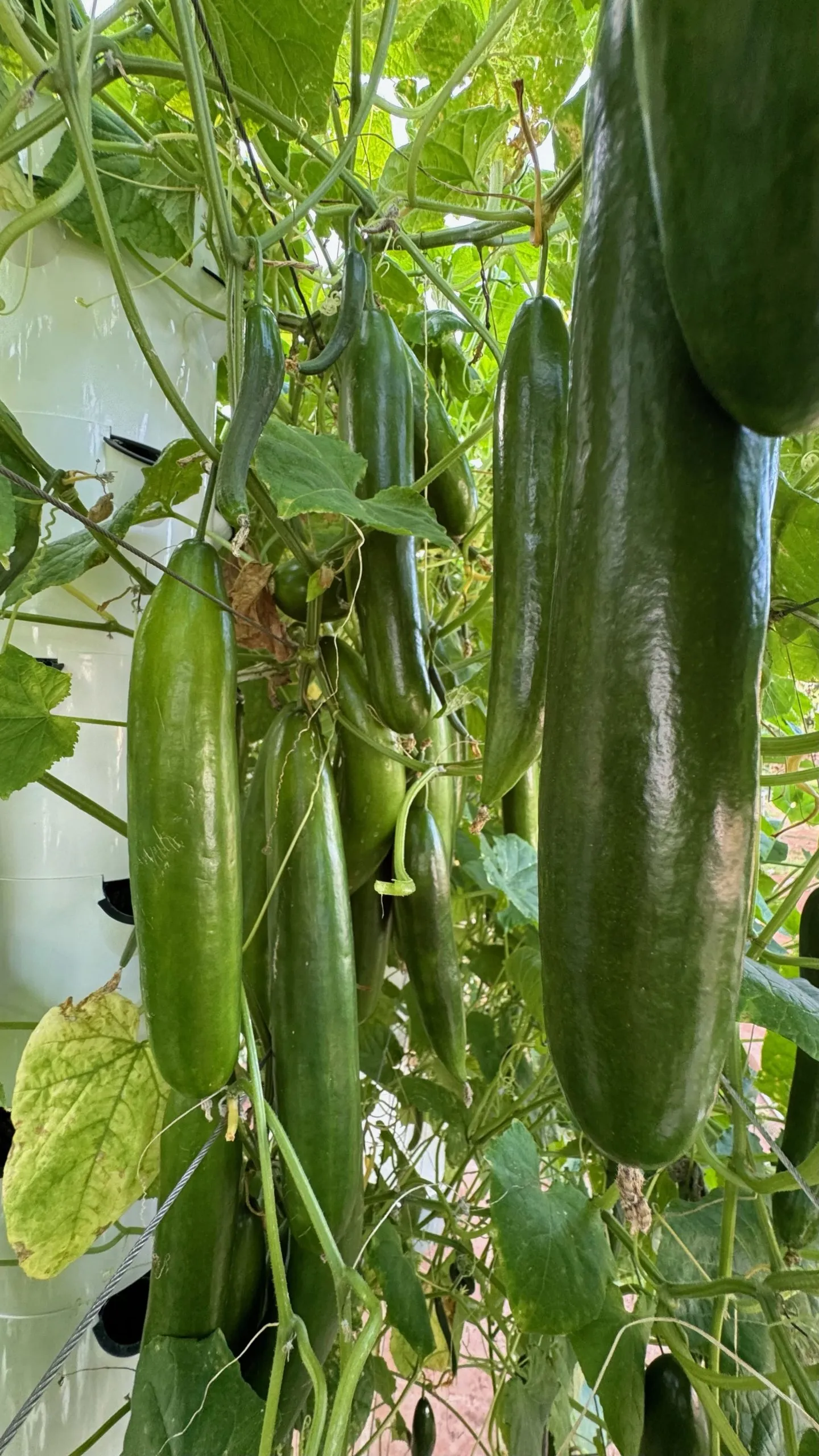As the disease progresses, the leaves might become wrinkled or even curled, which is much more than just a “cosmetic issue,” as it affects the plant’s overall health. The cucumbers themselves end up being smaller, fewer in number, and often feature odd shapes with bumpy skin showing uneven coloring.

Mosaic Virus is Transmitted by Insect Vectors:
The culprits of mosaic viruses are the following insects:
#1) Aphids: The most significant and common vectors, aphids can transmit many types of mosaic viruses, such as Cucumber Mosaic Virus (CMV) and Tobacco Mosaic Virus (TMV).
#2) Leafhoppers: Like aphids, leafhoppers are the enemies of your vegetable garden, whether you are growing crops on aeroponic towers or through conventional soil farming/gardening. Leafhoppers can transmit viruses like the Maize Chlorotic Mottle Virus, which can lead to mosaic symptoms in affected plants.
#3) Whiteflies: These insects are known to transmit viruses like the Tomato Yellow Leaf Curl Virus (TYLCV), which can cause mosaic-like symptoms in tomatoes and other crops. Although whiteflies can transmit mosaic virus to a wide array of vegetables, their main focus is tomatoes!
#4) Thrips: Tiny in size but big in problems created through virus transmission, thrips can transmit the Tomato Spotted Wilt Virus (TSWV), which leads to mosaic patterns on leaves.
#5) Beetles: Some species of beetles, such as cucumber beetles, can transmit mosaic viruses like the Squash Mosaic Virus (SqMV).
#6) Mites: Although less common, some mites can also play a role in the transmission of mosaic viruses.
Each of these insects acts as a vector by feeding on infected plants and then transferring the virus to healthy plants. The type of virus and the specific insect involved can vary depending on the crop and region. Managing these insect populations is crucial in controlling the spread of mosaic viruses in crops.
Spread of Mosaic Virus:
Aside from insects, gardeners and farmers are often responsible for the spread of the disease when using tools that have been infected.

What Can I Do Against Mosaic Virus?
Although the mosaic virus is a severe threat (mainly for cucurbits such as melons, squash, etc., and mainly cucumbers), there’s a lot that can be done to circumvent this problem:
#A) Select mosaic virus-resistant crop varieties.
#B) Control insect vectors with organic insecticides/pesticides. Never use artificial toxic chemicals.
#C) Practice increased farm/garden hygiene.
#D) Remove affected plants/leaves quickly.
#E) Manage weeds around the farm/garden, as they can harbor mosaic viruses and the insects that spread them.
In other words, whether you run a commercial farming operation or just grow food in your garden, keep the food-growing area and surroundings weed-free.






